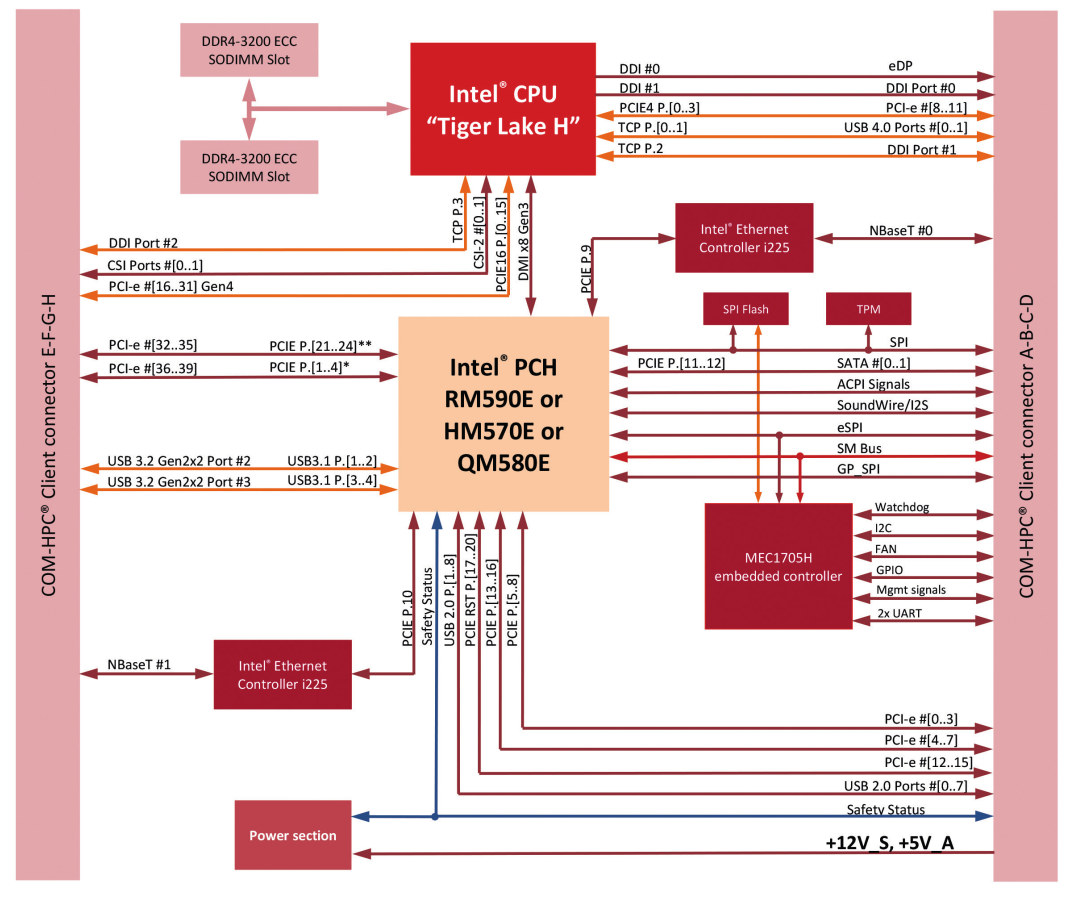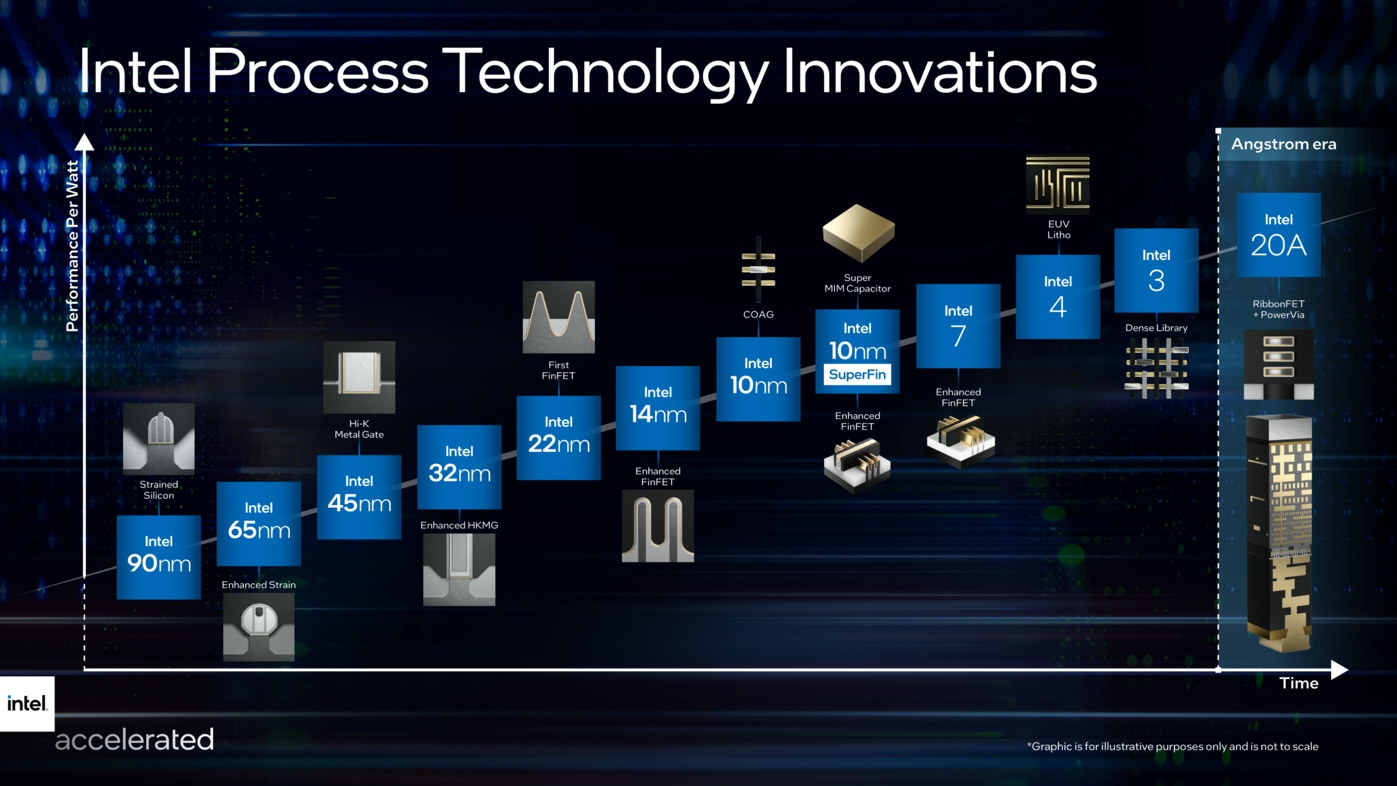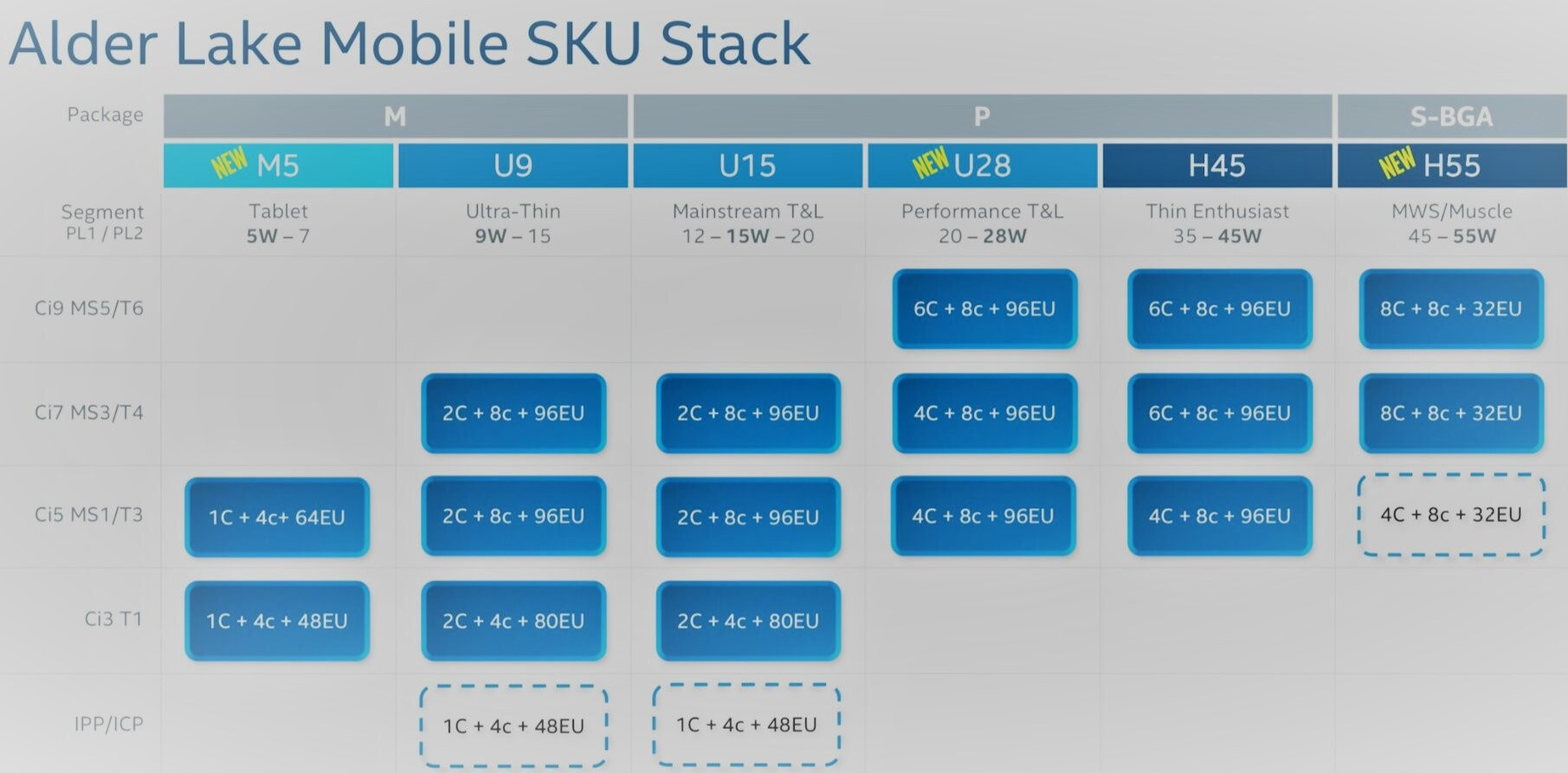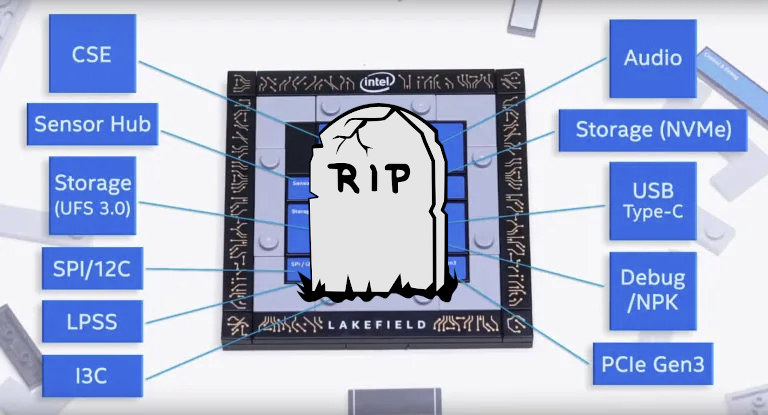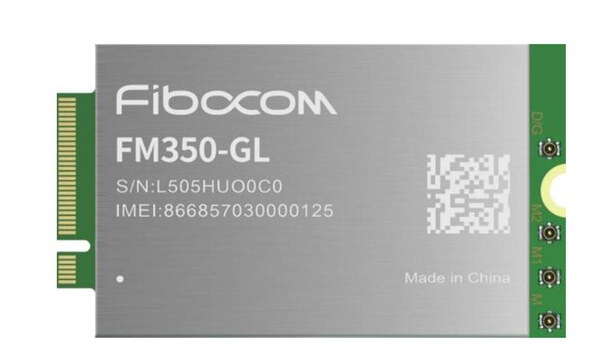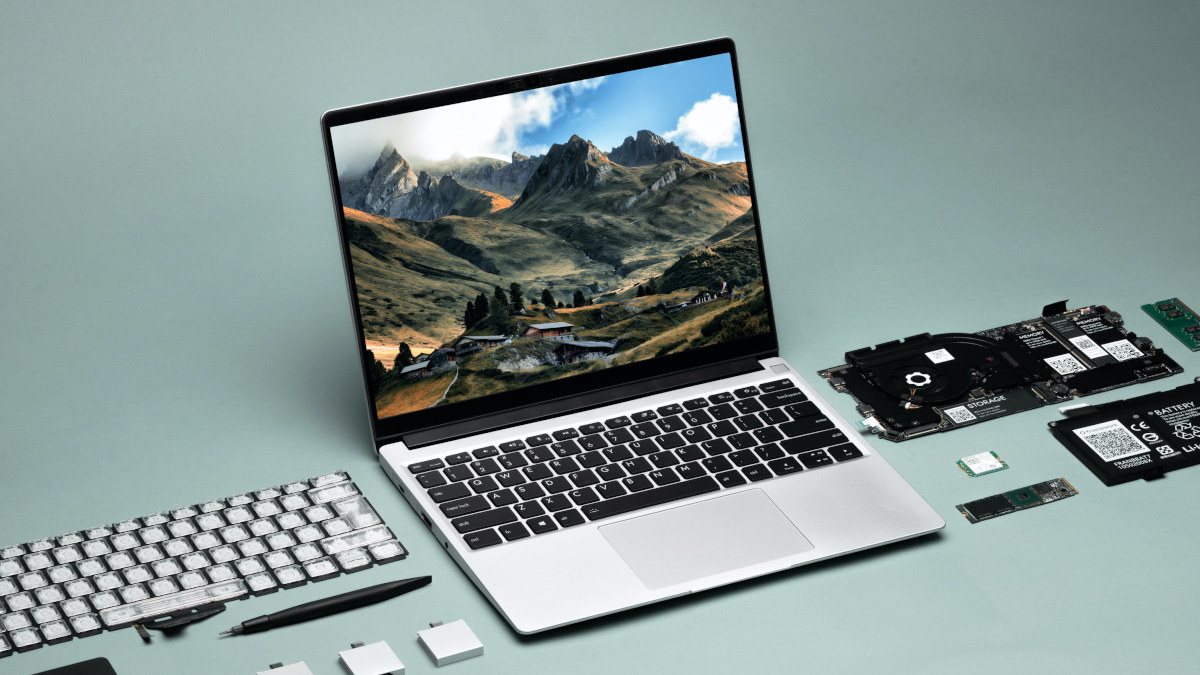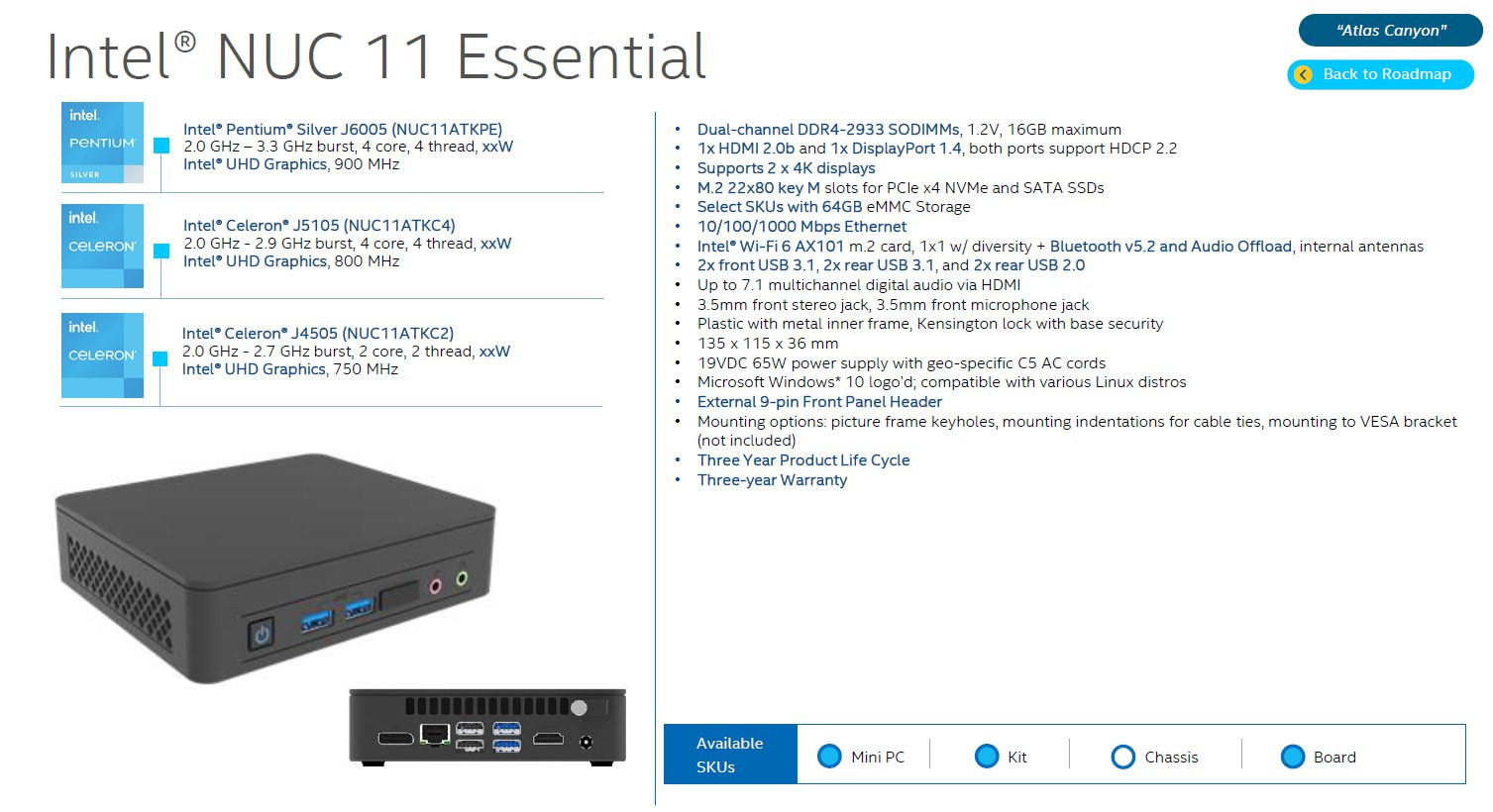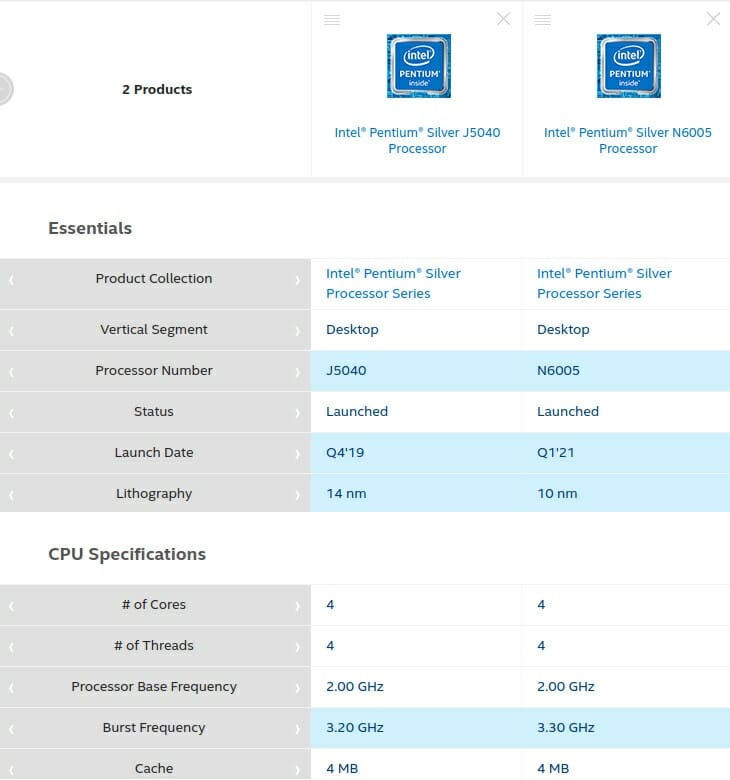While doing some research, I noticed an Intel Core i7-11850HE “Tiger Lake-H” processor on the OpenVino Toolkit website. Parts that end with “E” are usually processors designed for the embedded market. I had never heard about the Tiger Lake-H embedded family, so I looked for “i7-11850HE” processor, and it’s not in Intel Ark, or much anywhere else except on a page in Google Cache, about a COM-HPC module “with the 11th Gen Intel® Xeon® W-11000E Series, Core™ vPro® and Celeron® processors (formerly Tiger Lake-H) for FuSa application”. There we have a list of Xeon, Core, and Celeron 11th generation processors that I don’t think have ever been announced: Intel Celeron 6600HE dual-core processor @ 2.6GHz with 8MB L3 Cache, 35W TDP Intel Core i3-11100HE processor with 4 cores / 8 threads @ 2.4GHz (up to 4.4GHz in Turbo Boost) with 8MB L3 Cache, 45/35W cTDP Intel Core vPRO i5-11500HE processor […]
Intel packaging & process roadmap to 2025 and beyond
Intel has a mixed history with its ability to keep production schedules for new processes, with notably its 10nm process suffering from years of delays before finally being deployed into chips. But the US company has now held an event unveiling the process & package roadmap through 2025 and beyond, which includes 7nm, 4nm, 3nm, and even the switch the angstrom scale (1A = 0.1 nm) with a 20A process expected in 2024/2025. Intel Process roadmap to 2025 and beyond On the process node sides of things, here’s what to expect in the next few years: Intel 7 delivers 10% to 15% performance-per-watt improvements, and will be found in Alder Lake for client in 2021 and Sapphire Rapids for the data center, with the latter expected to be in production in Q1 2022. Intel 4 promises a 20% performance-per-watt increase over Intel 7, and is the first Intel FinFET node […]
Intel Alder Lake hybrid mobile processor family to range from 5W to 55W TDP (leak)
Intel’s first foray into hybrid processors using Foveros 3D stacking technology did not end well with the company just announcing the end of the life for Lakefield hybrid processors. But the company is not giving up on hybrid technology, and a recent leak shows the Intel Alder Lake family comprised of more powerful mobile hybrid processors will be offered for a wide range of applications from tablets with 5-7W M5 processors and up to “muscle laptops” or mobile workstations (MWS) with H55 processor at 45-55W TDP. Alder Lake hybrid processors will be comprised of high-performance CPU “Golden Cove” cores and energy-efficient Atom-based “Gracemont” CPU cores, in a way that’s similar to Arm’s Cortex-A7x big cores and Cortex-A5x LITTLE cores with big.LITTLE or DynamIQ processing with the goal of optimizing power consumption. The Intel Alder Lake Mobile SKU stack includes processors for 6 market segments including three “new” segments/TDP ranges according […]
End-of-life notice issued for Intel Lakefield hybrid processors
Intel launched Core i3-L13G4 and Core i5-L16G7 penta-core Lakefield Hybrid processors last year with one high-performance Sunny core, and four high-efficiency Atom Tremont cores, in a way that’s similar to what Arm is doing with DynamIQ and before that, big.LITTLE technology. The new processors were found in Lenovo ThinkPad X1 Fold foldable tablet and Samsung Galaxy Book S laptop, both premium products sold for over $2,000. Even some large websites never got hold of a testing sample of those products, and Anandtech has just reported that Intel published a product change notification (PCN) with the title “Select Intel Core Processors with Intel Hybrid Technology, PCN 118334-00, Product Discontinuance, End of Life”. The discontinuance of Lakefield hybrid processors is a shocker considering they were just introduced last year, but I don’t think it will affect many people as I hadn’t heard about any upcoming boards or products based on Intel’s hybrid […]
Intel 5G Solution 5000 5G M.2 module developed with MediaTek, Fibocom
Qualcomm very recently unveiled Snapdragon X65 and X62 5G M.2 card reference designs to help OEM’s develop their own 5G modules for integration into PC’s and CPE’s. But as one should have expected, more options are coming, and Intel have now announced their own “5G Solution 5000” 5G M.2 card for laptops at Computex 2021 in collaboration with MediaTek and Fibocom. Fibocom FM350-GL (Intel 5G Solution 5000) specifications: Modem technologies – 5G NR, 4G LTE, 3D WCDMA Frequency bands – Sub 6GHz for global coverage Data throughput 5G NR – Up to 4.7 Gbps downlink; up to 1.25 Gbps uplink 4G LTE – Up to 1.6 Gbps Cat 19downlink; up to 150 Mbps uplink Built-in eSIM Host interface – PCIe Gen 3 Dimensions – 30 x 52 x2.3 mm (M.2 card) Temperature Range – -10 to +55°C The 5G module targets platforms built upon Intel Tiger Lake and Alder Lake […]
Framework Laptop upgradable, repairable & modular laptop pre-orders opened for $799 and up
Most laptops are not made to be serviced by the end-users or expanded. In the part of the world where I live, I still have a “warranty void” sticker if I open my laptop to add an M.2 SSD. There are very few laptops with full documentation and whose companies encourage users to update and modify the hardware. Olimex TERES-I and MNT Reform 2 open-source hardware laptops do offer modularity, customization, and repairability, but they are based on low-power Arm processors and cater to a rather niche market. However, a new company called Framework is preparing to launch a modular laptop that is easily upgradeable and repairable with a more powerful set of features. The Framework laptop is offered with a choice of 11th generation Intel Tiger Lake Core processor, up to 64GB RAM, up to 4TB SSD storage, a 13.5-inch display, a Full HD webcam, a 55Wh battery, and […]
Intel Atlas Canyon NUC to feature Jasper Lake J-Series processors (Leak)
Intel Jasper Lake N-series low-power processor family was introduced as an update to the Gemini Lake family last January, and the first Jasper Lake mini PC’s have just started to show up with mass production scheduled in mid-May. But now, courtesy of FanlessTech, we have more information about Intel Atlas Canyon NUC that will be offered with a choice of three Jasper Lake processors, namely Pentium Silver J6005, Celeron J5105, and Celeron J4505, all of which are J-series, and have yet to be announced/listed on Intel Ark website. Intel NUC 11 Essential “Atlas Canyon” specifications: SoC NUC11ATKC2 – Intel Celeron J4505 dual-core processor clocked at 2.0 GHz / 2.7 GHz (Burst) with Intel HD Graphics @ 750 MHz NUC11ATKC4 – Intel Celeron J5105 quad-core processor clocked at 2.0 GHz / 2.9 GHz with Intel HD Graphics @ 800 MHz NUC11ATKPE – Intel Pentium Silver J6005 quad-core processor clocked at 2.0 […]
Intel Jasper Lake N-Series launched with 6W Celeron and 10W Pentium Silver processors
Intel has finally announced the Gemini Lake processor family successor at CES 2021 together with other processors. The Jasper Lake family currently comes with six different Celeron and Pentium Silver parts with respectively 6W and 10 TDP. The company positions those for the education market, but I’d expect them to also be found in various mini PCs, single board computers, and systems-on-module. The processors are manufactured with the company’s 10nm process, and are said to deliver up to 35% better overall application performance and up to 78% better graphics performance compared to Gemini Lake Refresh processors. The new parts listed on Ark are not really new for CNX Software readers as we published the list of Jasper Lake processors in September following a leak. But we know have more details, so let’s compare the top parts of both Gemini Lake Refresh (Pentium Silver J5040) and Jasper Lake (Pentium Silver N6005) […]


